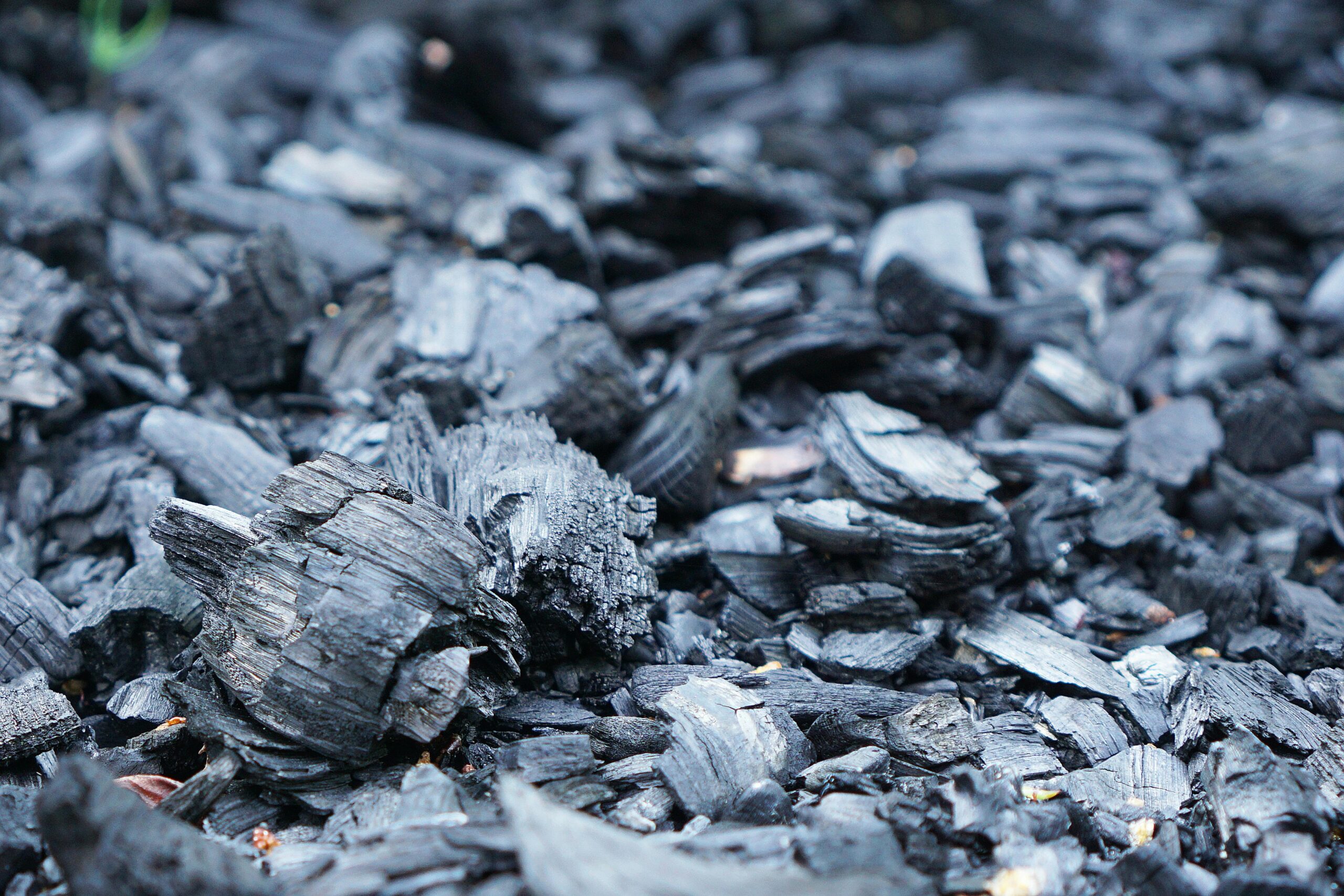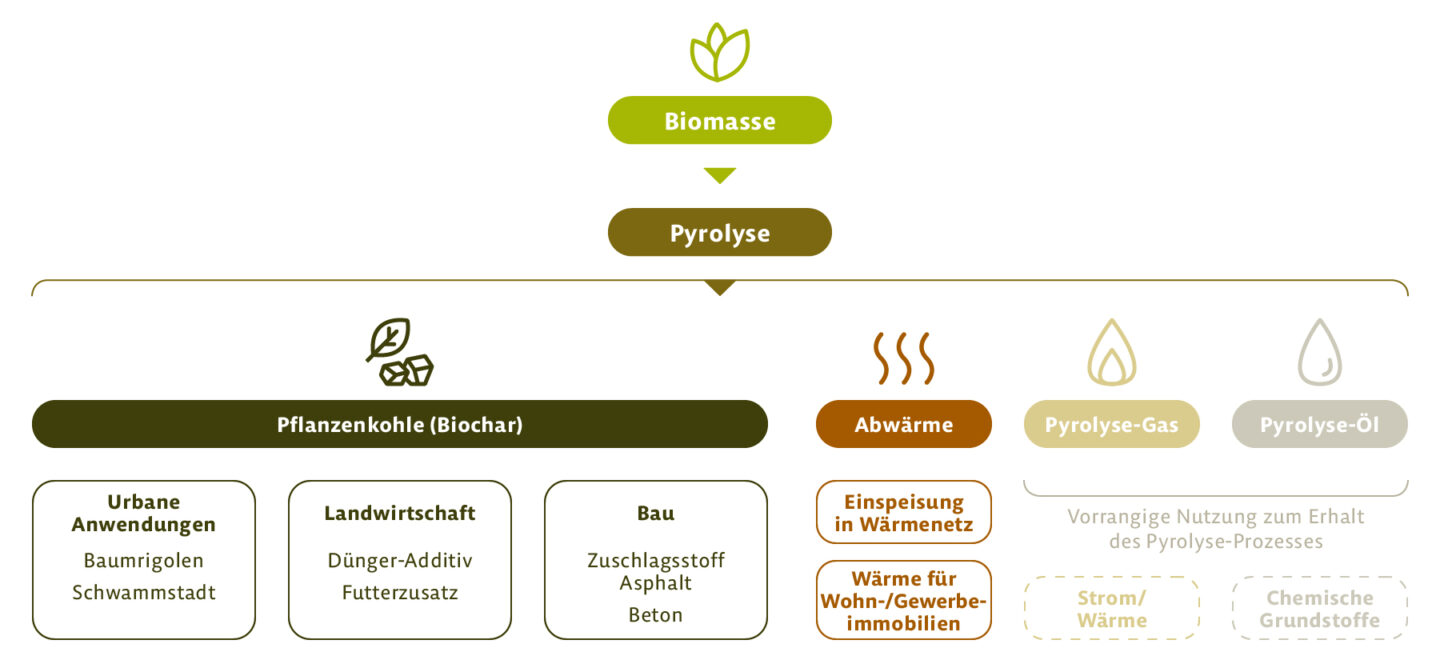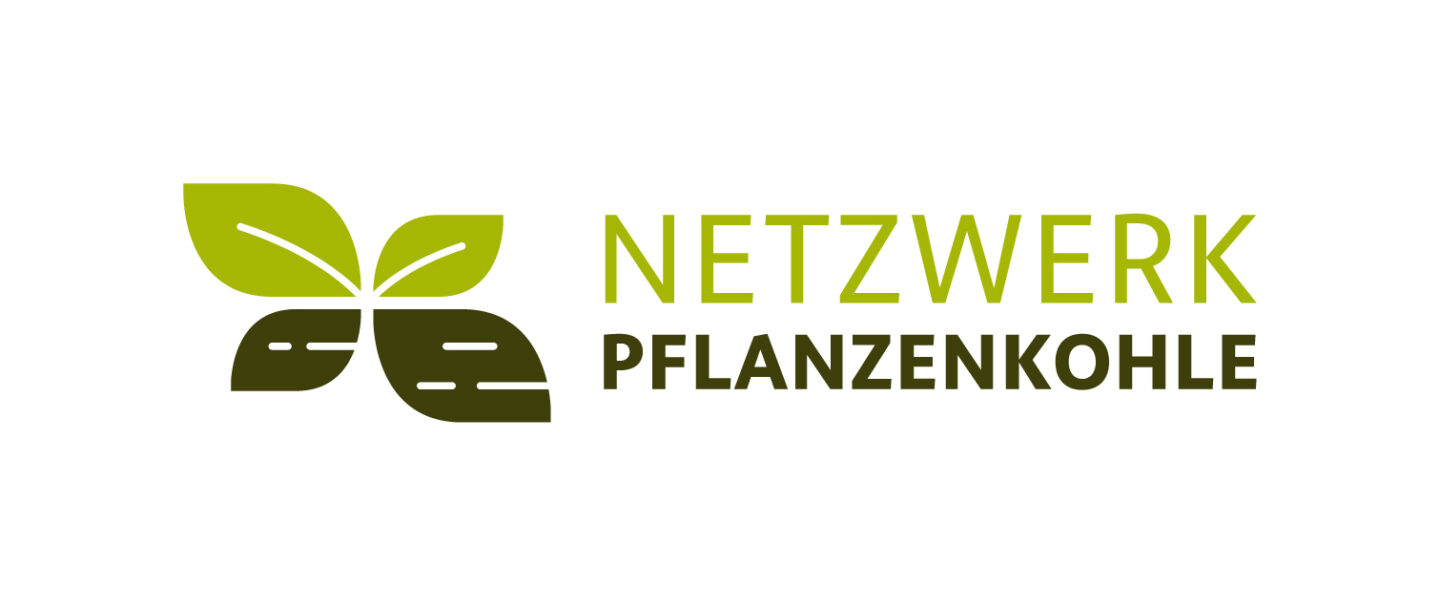
The climate protection potential of biochar
A promising method and technology in the field of negative emissions is biochar. Its use has the potential to have a positive impact on climate neutrality on several levels, including carbon sequestration, greenhouse gas emission reduction and the promotion of sustainable waste management. Hamburg Institut is intensively involved in the field of biochar and sees a need for more knowledge and networking among the various stakeholders. To this end, we have launched the biochar network “Netzwerk Pflanzenkohle” in cooperation with German Biochar e.V.
A hidden champion in the field of negative emissions
Whether it’s the Paris Agreement, the EU’s Net Zero Act or the German government’s goal of climate neutrality by 2045: these and other climate targets will be impossible to achieve without negative emissions – i.e. the active removal of CO2 from the atmosphere. However, negative emissions – removals – are often overlooked in corporate and municipal climate strategies, and concrete target paths for negative and non-energy emissions are mostly lacking.
The topic of negative emissions is increasingly becoming the focus of attention across all sectors. Biochar Carbon Removal (BCR) is still a relatively unknown quantity – unjustly so: BCR has the potential to become an important solution component in the field of carbon management. Through the process of pyrolysis and the corresponding use of biochar, carbon can be removed from the atmosphere and stored long-term. The possible applications of biochar are diverse, ranging from agriculture and industry to municipal environment.


Would you like to learn more about biochar?
Our paper about the underestimated climate protection potential of biochar (in German) provides a broad overview of the current state of the art in the field of biochar carbon removal and shows why BCR is a promising method in the increasingly important area of negative emissions. The biomass technology of pyrolysis is examined, as are possible applications and the market situation for biochar. A separate chapter highlights the opportunities that arise specifically for municipalities. The concluding outlook summarises what is now needed to help biochar carbon removal achieve a breakthrough.
Biochar: Potential for municipalities
Many municipalities today focus on minimising energy emissions, i.e. emissions from the generation of electricity and heat. In many places, non-energy emissions and how they are to be offset in the future are neglected. In order to achieve municipal climate targets, however, municipalities must take responsibility wherever possible for both non-energy emissions and the negative emissions that need to be provided. The potential for conventional biological measures such as afforestation or renaturation of wetlands to create carbon sinks in urban areas is often very limited in terms of space. This makes it all the more important to exploit all existing potential within the scope of municipal action.
Several points speak in favour of biochar in this context: it is a mature technology that is already being used in numerous pilot projects in Germany. Suitable raw materials are available at low cost in many municipalities. Important stakeholders for taking up production are also often in municipal hands and can establish a closed cycle with appropriate partners.
.

Biomass: Municipalities produce various types of biomass waste, e.g. green waste from landscaping.
Pyrolysis plant: Biomass is converted into biochar in an oxygen-limited environment. This process also produces pyrolysis oil and gas.
Sewage treatment plant: The residual sewage sludge can be used as a raw material for the production of biochar.
Heat network: Heat networks are an important component of sustainable municipal heat planning.
Tree pits: Tree pits and other urban green spaces can be filled with biochar. This improves water retention and creates carbon sinks, among other benefits.
Building materials: Carbon can be stored for longer periods in building materials such as asphalt in the form of biochar.

The biochar network “Netzwerk Pflanzenkohle” supports a wide range of stakeholders in their efforts to promote biochar. The aim is to advance practical implementation through the exchange of knowledge and experience, thereby accelerating the learning curve for technology and business models – an important contribution to the market ramp-up and scalability of pyrolysis technology.
The initiator and operator of the network is Hamburg Institut, in close cooperation with German Biochar e.V. The network is aimed at all stakeholders across all sectors with an interest in this future-oriented topic, including municipalities and districts, waste management companies, companies in the circular economy, the food industry and other sectors, manufacturers and service providers for pyrolysis plants, investors, banks, insurance companies, certifiers, scientists and associations.
Further information is available on the network website: netzwerk-pflanzenkohle.de
References. Our contribution to the topic of climate neutrality
Kontakt
Have we piqued your interest?
Hamburg Institut persönlich treffen
Conferences, lectures, workshops, trade fairs - the team of Hamburg Institut is looking forward to meeting you in person and exchanging ideas with you. We will inform you here as soon as new dates are fixed.
